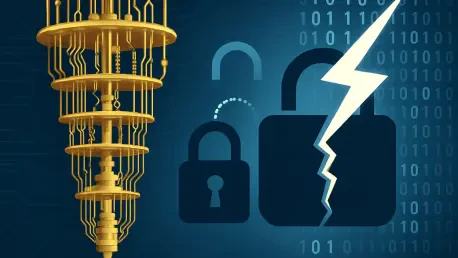In a world where computational power is increasingly defining the boundaries of innovation, IBM has just dropped a bombshell that could reshape the future of technology while simultaneously raising alarm bells about digital security. Announced at a recent Quantum Developer Conference in New York, the tech giant revealed groundbreaking strides in quantum computing that promise to outpace classical systems in solving some of humanity’s most complex challenges. From drug discovery to energy optimization, the potential applications are staggering, yet they come with a darker side: the looming threat to current encryption standards that safeguard everything from financial transactions to personal data. As quantum systems edge closer to practical use, the balance between harnessing their transformative power and protecting the digital landscape becomes a pressing concern. This pivotal moment in tech history demands a closer look at both the advancements driving this revolution and the risks they introduce to an interconnected world.
Quantum Computing Milestones on the Horizon
IBM’s latest roadmap sets ambitious targets that could redefine computational capabilities within a few short years. The company is pushing for quantum advantage by 2026, a point at which quantum systems are expected to outperform the most powerful classical supercomputers in specific tasks. Beyond that, the goal of achieving fault-tolerant quantum systems by 2029 stands as a monumental objective, promising machines that can self-correct errors in real time and operate reliably at scale. Supporting these goals are two innovative processors unveiled recently: Nighthawk, capable of managing circuits a third more complex than prior models with reduced errors, and Loon, an experimental chip marking early progress toward fault-tolerant designs. Additionally, IBM has enhanced error-correction speeds by a factor of ten, achieving this milestone ahead of schedule through advanced manufacturing processes at its New York facility. This leap forward signals that quantum computing is no longer a distant dream but a rapidly approaching reality with profound implications.
The significance of these advancements cannot be overstated, as they lay the groundwork for tackling problems that classical computers simply cannot solve efficiently. Imagine accelerating drug discovery by simulating molecular interactions at unprecedented speeds or optimizing energy grids to minimize waste on a global scale. IBM’s shift to a 300mm wafer manufacturing process has doubled production capacity, bringing scalable quantum systems closer to commercial viability. This progress is not just about raw power; it’s about precision and reliability, critical factors for real-world applications. However, as these systems grow more capable, they also cast a shadow over existing technological frameworks, particularly in areas reliant on secure data transmission. The very innovations that promise to unlock new frontiers in science and industry also challenge the foundational security mechanisms that protect digital interactions, setting the stage for a complex interplay of opportunity and risk in the tech ecosystem.
The Double-Edged Sword of Quantum Power
While the potential of quantum computing to revolutionize industries is undeniable, it brings with it a significant threat to digital security that cannot be ignored. Experts warn that the cryptographic algorithms underpinning technologies like Bitcoin and Ethereum—systems that secure billions in transactions—could be vulnerable to quantum attacks once sufficiently advanced systems emerge. The ability of quantum machines to break encryption that would take classical computers millennia to crack poses a risk not just to cryptocurrencies but to any platform relying on current security protocols, including banking and government systems. This vulnerability, often termed a “quantum apocalypse” in tech circles, highlights the urgent need for industries to adapt before these powerful tools are fully realized. The race is on to develop safeguards that can withstand the computational might of quantum systems, a challenge as daunting as the technology itself.
Compounding this issue is the concept of “harvest now, decrypt later” attacks, where malicious entities might steal encrypted data today with the intent of decrypting it once quantum capabilities mature. This looming threat has sparked varied perspectives among industry leaders and researchers. Some argue that the danger remains years away, allowing time for preparation, while others stress immediate action, noting that the erosion of trust in digital systems could have cascading economic effects. For instance, blockchain developers are being urged to transition to post-quantum encryption standards to preemptively mitigate risks. Meanwhile, practical interim solutions, such as using specific wallet types for cryptocurrency holdings, are being suggested to buy time while robust defenses are built. This diversity of opinion underscores a critical point: while quantum computing holds immense promise, its disruptive potential demands proactive measures to protect the integrity of the digital world.
Navigating the Path Forward with Caution
Reflecting on IBM’s recent strides, it’s clear that the journey toward quantum supremacy took significant leaps with the introduction of cutting-edge processors and accelerated error-correction techniques. These milestones, achieved through innovative manufacturing and relentless research, positioned the tech giant at the forefront of a computational revolution that once seemed like science fiction. The promise of solving intractable problems in fields like materials science and pharmaceuticals fueled excitement across industries, yet the shadow of security vulnerabilities tempered that enthusiasm. Discussions among experts revealed a shared urgency to address encryption weaknesses, with calls for preemptive strategies echoing through the tech community. IBM’s progress served as a stark reminder that innovation and risk often walk hand in hand, prompting a collective push to rethink how digital safety is approached.
Looking ahead, the focus must shift to actionable steps that balance the benefits of quantum advancements with the imperative to secure data against emerging threats. Industries, particularly those reliant on blockchain and encrypted communications, should prioritize the development and adoption of quantum-resistant encryption standards without delay. Collaborative efforts between tech companies, researchers, and policymakers will be essential to establish frameworks that protect against potential breaches while fostering innovation. Exploring hybrid security models that combine classical and post-quantum techniques could offer a bridge during this transition period. As quantum systems inch closer to practical deployment, staying ahead of malicious actors through continuous investment in cybersecurity research becomes non-negotiable. The path forward requires vigilance and adaptability, ensuring that the transformative power of quantum computing is harnessed responsibly to benefit society without compromising the trust that underpins the digital age.









